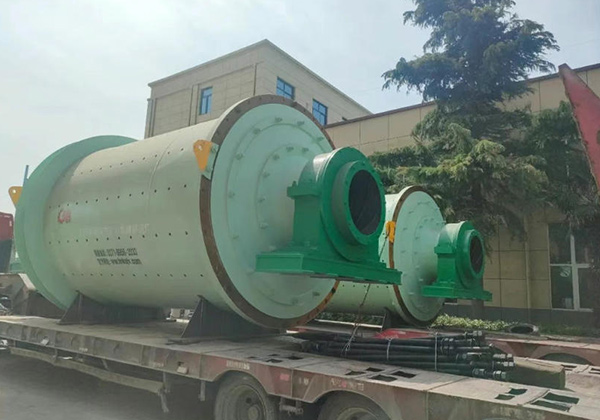Product FAQ
Selection of the number of oil chambers in the static pressure bearing of ball mill
When the bearing size is determined, the oil chamber pressure is determined solely by the load. Today, Yingkuang Machinery will explain to you the selection of the number of oil chambers of the ball mill hydrostatic bearing and the selection of whether there is a circumferential oil return groove, so that everyone can have a preliminary understanding of the ball mill hydrostatic bearing.
Ball mills are low-speed and heavy-loaded machinery. Since the load direction of the ball mill bearing is vertically downward and the range of variation is small, open bearing cylindrical radial bearings are generally used. This structure has the advantages of large ability to withstand positive direction loads, simple structure, and convenient manufacturing and adjustment.

1. Selection of the number of oil chambers in the ball mill
The number of oil chambers can be single or multiple. For radial hydrostatic bearings, single oil chambers often cannot bear eccentric loads. If the load is offset, the pressure in the oil chamber is uniform, and only the pressure distribution on the two sides of the oil seal is different. The gap on the side far from the load is large and the pressure is small, while the pressure is large at the small gap. However, the pressure on the oil seal surface accounts for a small proportion of the pressure of the entire oil chamber. The oil seal surface on the side close to the load cannot generate enough supporting force, and the shaft will deviate to one side.
When the ball mill is working normally, it is impacted by the feeding and discharging, and the direction of the load fluctuates. Because the single oil chamber hydrostatic bearing has a weak ability to resist eccentric loads, a multi-oil chamber hydrostatic bearing is selected. When the load changes, the oil film thickness will change accordingly, changing the liquid resistance, so that the pressure of each oil chamber is different to balance the different loads borne by each. Two symmetrical oil chamber structures are selected in this design.
2. Choice of circumferential oil return groove or not
According to the oil return method, the oil chamber is divided into two types: with circumferential oil return groove and without circumferential oil return groove. If there is a circumferential oil return groove, the pressure oil of each oil chamber does not interfere with each other, and it has a higher ability to bear eccentric loads, and the oil film thickness is easy to adjust, but the flow rate is large. If there is no circumferential oil return groove, the ability to bear eccentric loads is poor, and the oil film thickness is not easy to adjust, but the effective bearing area is increased, so it has a greater ability to bear positive loads, and the flow rate is small. In a multi-cavity radial bearing, when the shaft (not rotating) is loaded and the pressure of each oil chamber is different, it will cause circumferential flow (inward flow) of oil, affecting the load-bearing capacity and oil film stiffness. However, when a flow regulating valve (equivalent to a variable throttle) is used, if the parameters are selected reasonably, its inward flow will be limited to a very small range, and its oil film stiffness is not lower than that of a bearing with a circumferential oil return groove. Here, a rectangular oil chamber without circumferential oil return is selected.
Categories
News
Contact Us
Contact: XKJ GROUP
Phone: 0086 138 3714 0277
Tel: 0371-65751333
E-mail: sales01@xkjgroup.com
Add: Xing yang city, Zheng zhou city, Henan province, China